US brand MSR is almost as well known for its camping and backpacking stoves as it is for its excellent tents. The expedition-ready Reactor cooking system is a favourite among our team, as is the convenient and user-friendly Windburner stove. However, both of those models are integrated or ‘all-in-one’ style stoves, which many backpackers find too bulky and heavy to take on weight-conscious trips.
Instead, the go-to options from MSR for ultralighters are the PocketRocket stoves. Top of the range is the PocketRocket Deluxe, a fully featured screw-in canister top stove that is still light and compact, yet also boasts fast boil times, good fuel efficiency and excellent real-world performance, especially in windy conditions.
 LFTO
LFTOPros
- Lightweight
- Excellent wind resistance
- Good simmer control
- Fast boil times
Cons
- Temperamental ignition
- Not the most stable
- Relatively expensive
| RRP: | £85 / $84.95 |
| Size (packed): | 8.5 x 5.5cm |
| Boil time: | 2 minutes 37 seconds |
| Power output: | 3,200W (10,918 BTU/hr) |
| Weight: | 82g / 2.9oz (100g / 3.5oz packed in storage bag) |
Design
The PocketRocket Deluxe is a classic screw-in style stove designed to sit on top of a standard EN417 threaded gas canister. When set up, the total stove height from the top of the canister to the base of your cooking pot is a fraction under 9cm, which ensures the stove doesn’t feel too top-heavy in use.
The stove incorporates three sturdy fold-out pot supports, with a total diameter of 12cm. This isn’t quite as generous as some rivals, and in our experience, triple supports also tend to be slightly less stable than four pronged supports, especially when you’re cooking with a larger pot on top.
On the other hand, the supports have plenty of serrated teeth to help grip the base of the pot. And for most backpackers, the dimensions should be perfectly adequate provided you’re only cooking for one or two people.
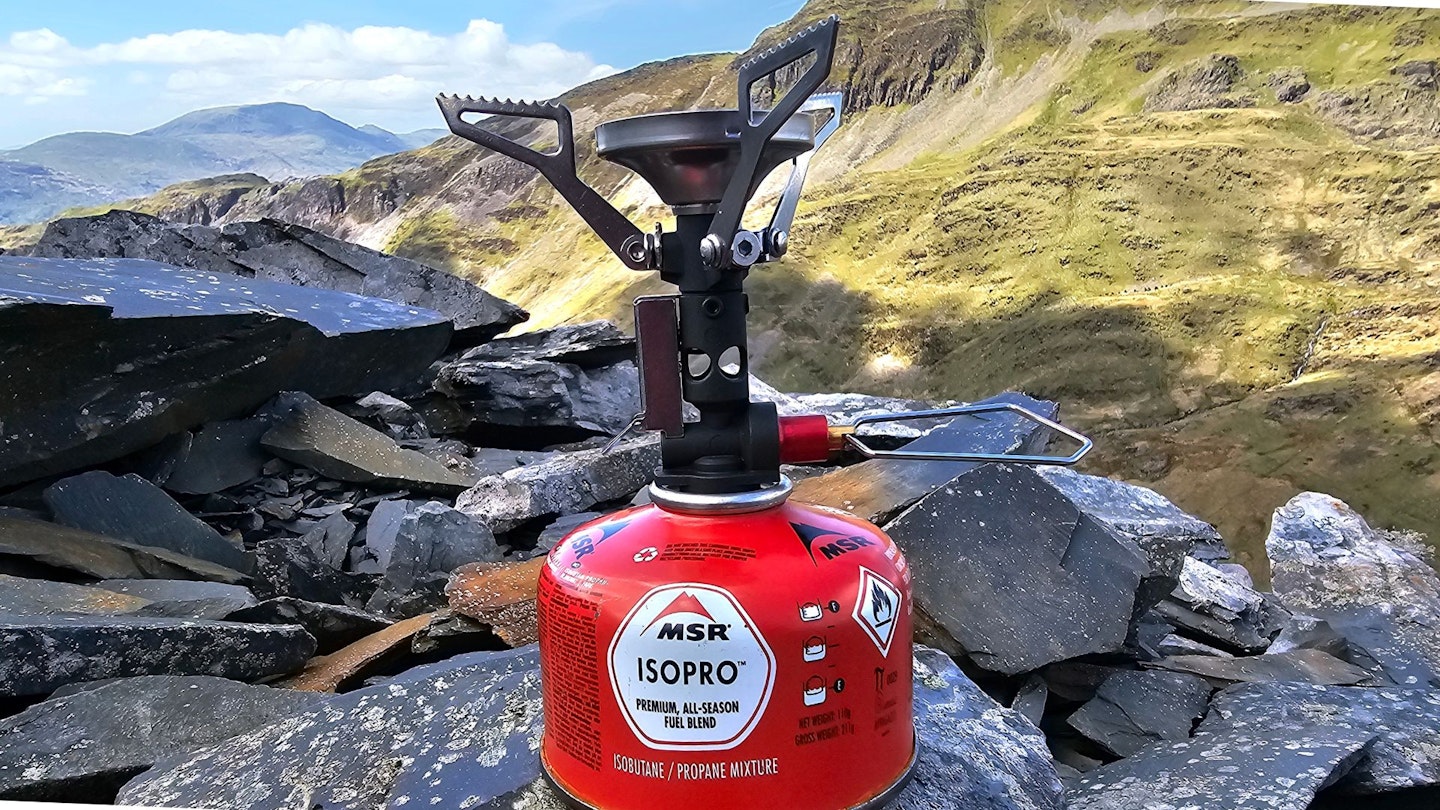
The body of the stove features an in-built regulator as well as integrated piezo ignition. Regulators helps to ensure a constant flow of gas to the burner head, especially as the gas canister empties, which makes this an important feature if you expect to be using the stove in cold weather.
The ignition is a slimline design with all delicate parts protected inside the burner. The sparker itself is also a wide metal strip, which is less likely to become brittle and snap off than a thin piece of wire.
The oversized wire control arm or bail used to adjust the flame is well designed. It’s easy to grip and folds neatly away. The base of the burner is also made from powder-coated aluminium with anodised components, so is less likely to corrode than some rivals.
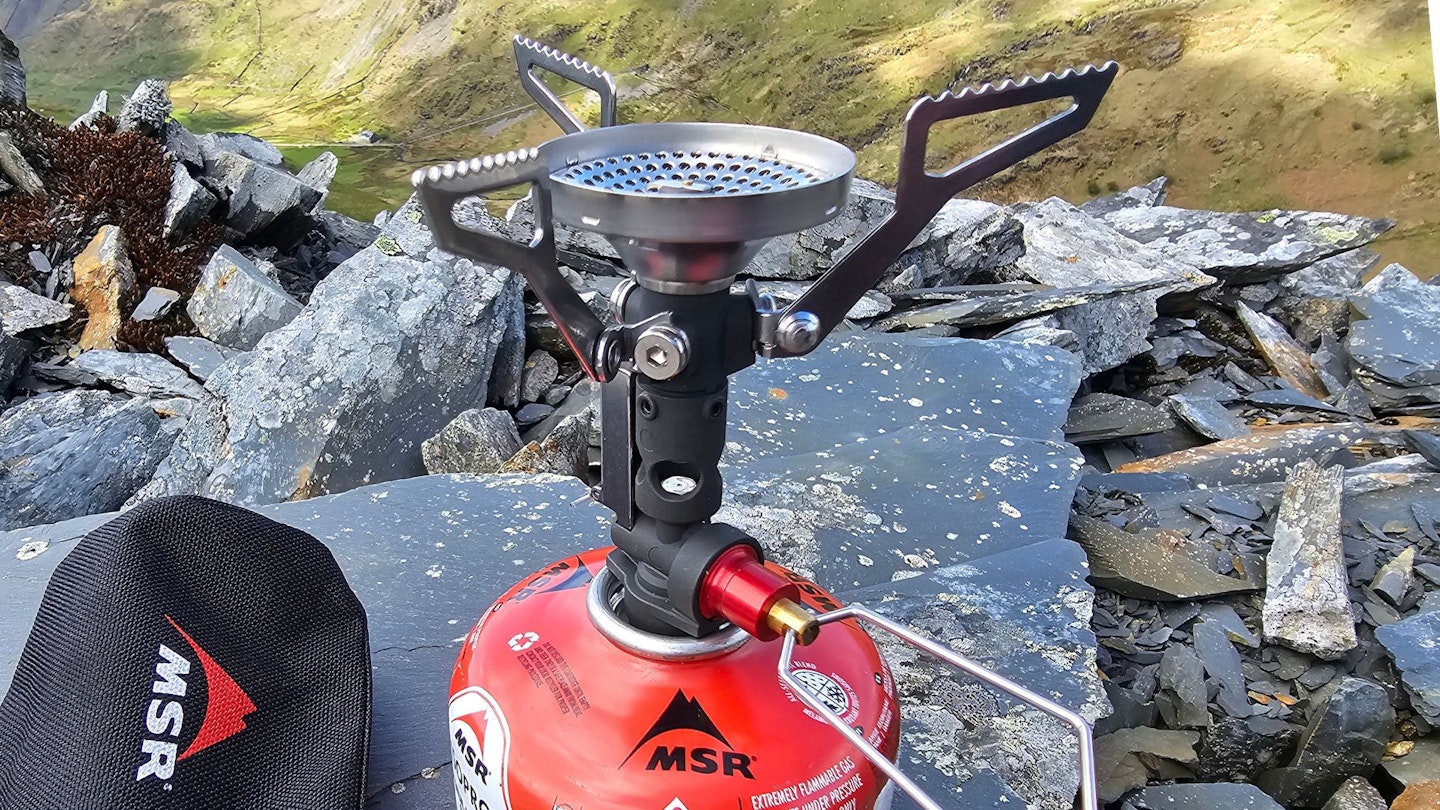
The 47mm burner head is a concave shape with a pronounced lip at the edge. This improves performance in gusty and breezy conditions. It’s almost exactly the same design as our Best in Test-winning SOTO Windmaster. The burner itself has a rated power output of 3,200W (10,918 BTU/hr), which makes this one of the most powerful stoves on test.
The PocketRocket Deluxe comes with a storage bag, made from PU-lined polyester with a drawstring closure. It’s a more robust and protective design than the flimsy pouches supplied with many stoves, though of course if you generally stash your stove inside a cooking pot or mug you can dispense with it altogether.
Performance

In the hills, the PocketRocket Deluxe punched well above its weight. Unlike a lot of small screw-in stoves, which are really only suited to boiling water, it’s possible to cook proper food with this stove. That’s because it has good simmer control and a relatively large burner head, which ensures better heat distribution. In turn, that means you don’t get hotspots that either cremate your food or make it stick to the bottom of your pot.
Boil times were impressive too. In our controlled boil test, the PocketRocket Deluxe boiled half a litre of water in 2 minutes and 37 seconds – and that was with a 6mph wind. This was the second-fastest result in our group test, only a few seconds behind the SOTO Windmaster. Both stoves are only slightly slower to boil than fully integrated ‘all-in-one’ stoves like the JetBoil Flash.

However, the Pocket Rocket Deluxe is a lot lighter and more packable than any all-in-one stove. Yet it delivers impressive real-world performance in windy weather. That’s down to the clever design of the burner head and the high-powered burner. It’s pretty much impossible to blow out at full power.
Of course, all that power usually affects fuel efficiency, which becomes all the more important on longer backpacking trips when you’re trying to eke out a gas canister for as long as possible. But actually, the Deluxe is commendably fuel-efficient for a canister top stove. And that’s at full power – if you want to conserve maximum fuel, turn down the flame adjuster and settle for a slightly longer boil time.
Weight and packed size
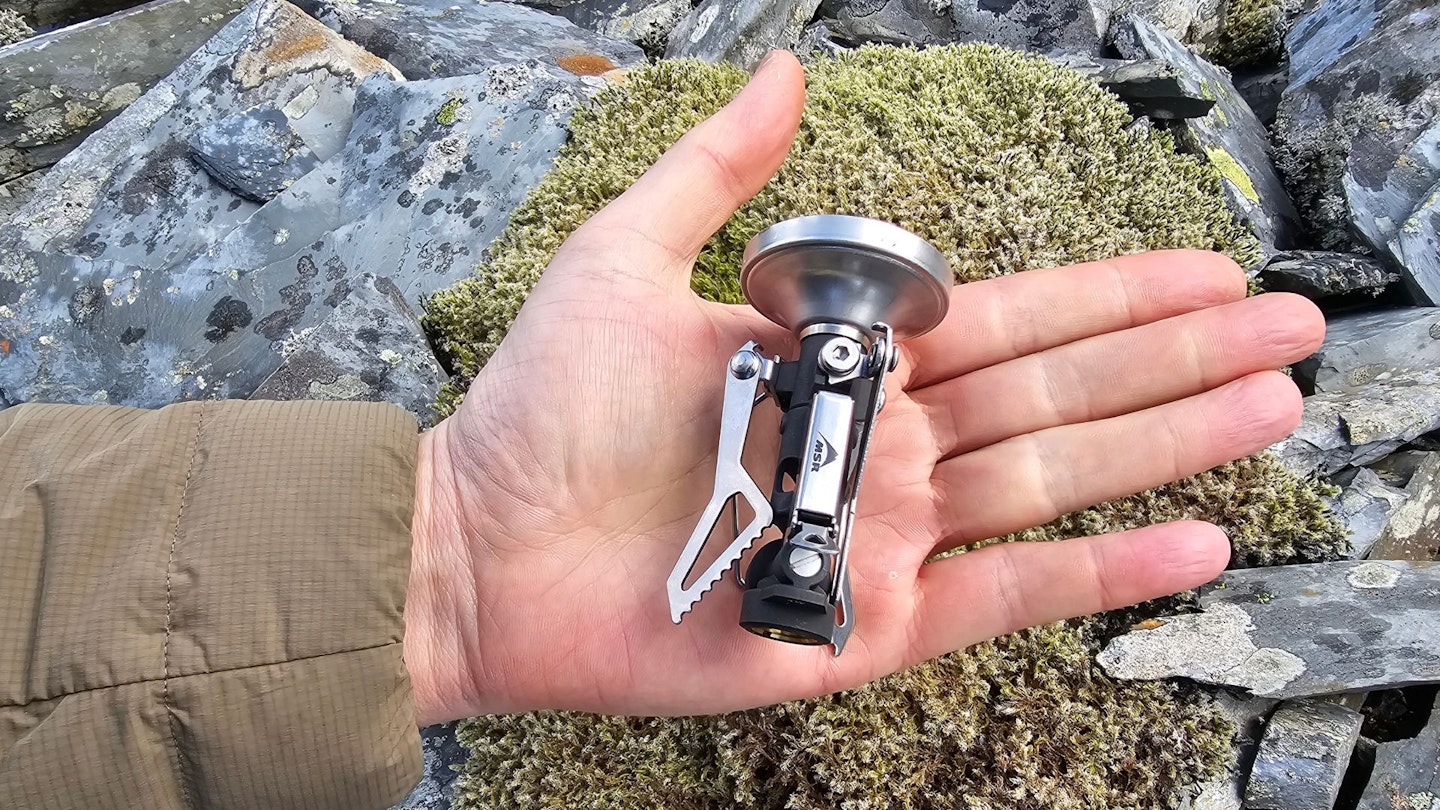
On our test scales, the PocketRocket Deluxe weighed in at 82g, or exactly 100g in its drawstring storage bag. That’s a commendably low weight for a stove that has both an integrated regulator and piezo ignition.
The packed dimensions are a svelte 8.5cm x 5.5cm, which ensures the stove is compact enough to nest inside many backpacking cooksets. The larger burner head means it isn’t quite as tiny as featherweight rivals like the Vango Atom or Robens Fire Midge though.
Ease of use
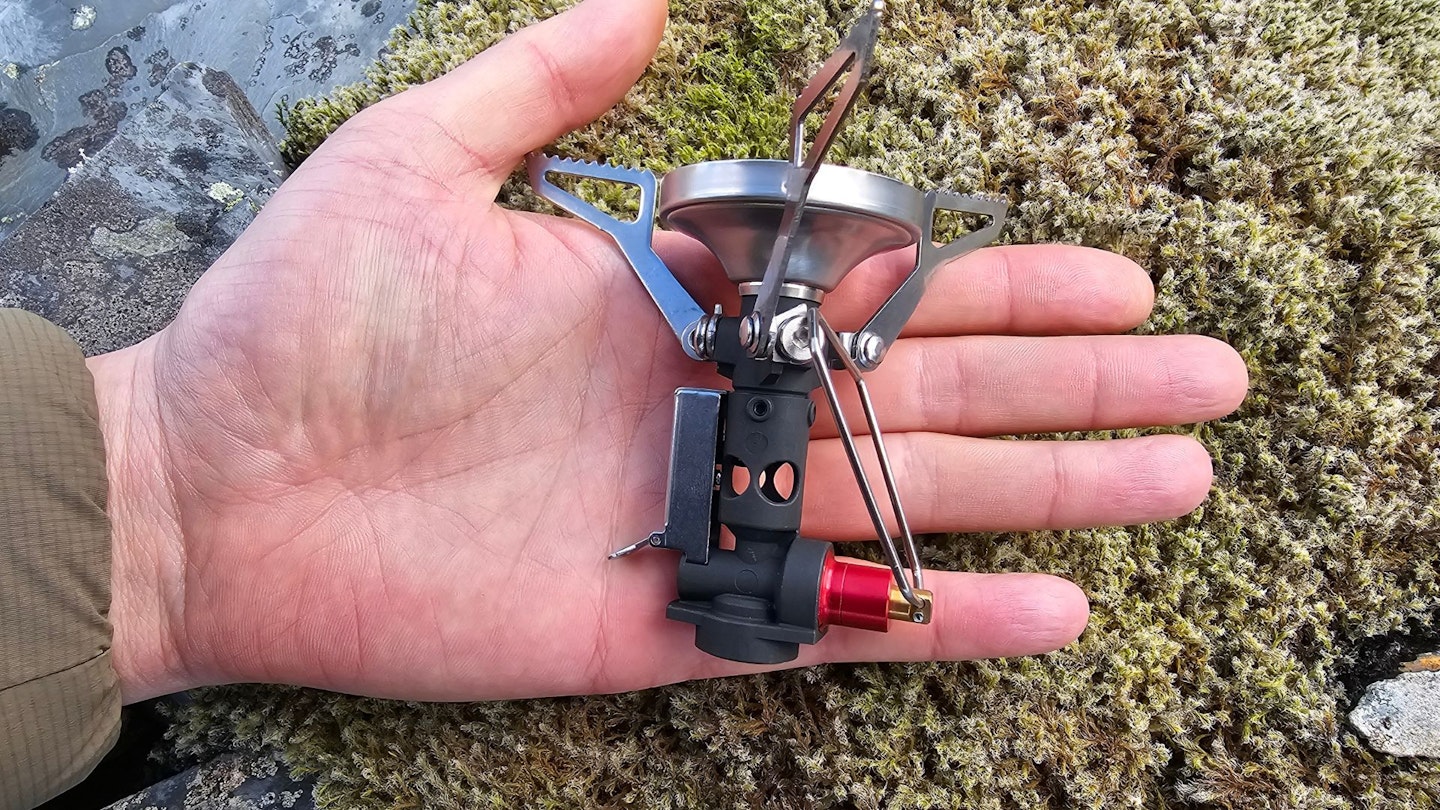
The stove screws securely to the gas canister and has two flanges that rest against the lip of the canister, reducing pressure on the thread and valve. It has an oversized wire control handle that make it easy to adjust the flame, whilst keeping fingers well out of harm’s way. Simmer control is also good, enabling adjustment even at low power without the burner going out.
The in-built piezo ignition is also a good feature, although it proved a bit temperamental on test. It sparked every time we pressed the button, but didn’t always light the stove, even with the valve fully open. Sometimes it took a half-dozen attempts to ignite the gas, and occasionally we resorted to just using a lighter instead.
In use, the stove proved reasonably stable, though the triple pot supports aren’t as wide as some rivals, nor quite as stable as stoves with four supports. However, this wasn’t an issue when using smaller pots or pans in cook sets designed for one to two people.
Price and competition
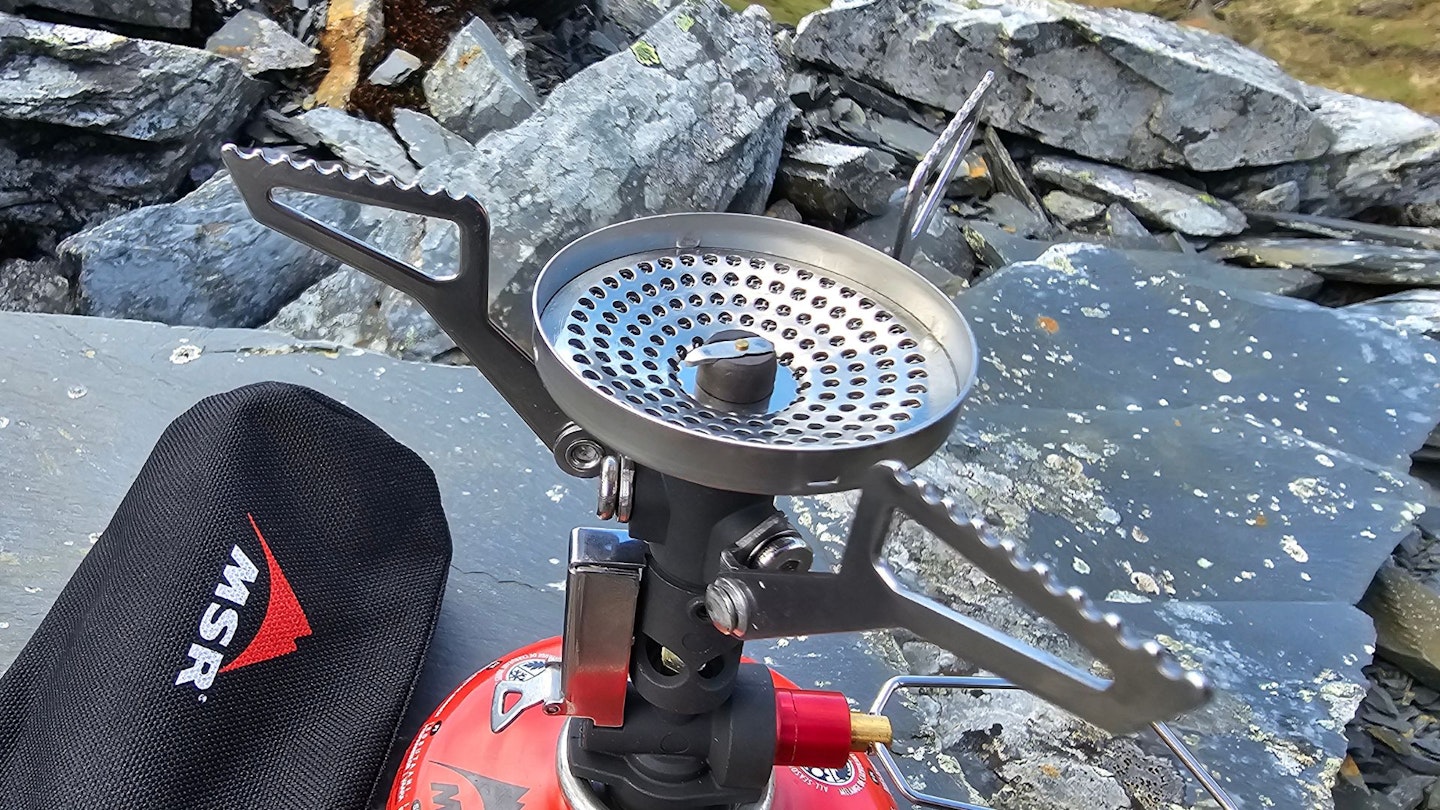
The PocketRocket Deluxe has an RRP of £85 ($84.95), which makes it the most expensive small canister stove in our group test. Shop around and you can find it closer to £70 though.
Alternatively, it can be purchased as a kit, bundled with a 1.2L aluminium pot, a plastic mug/bowl, strainer lid, pot handle and stuff sack. That gives you a complete solo cookset for backpacking, all for around £120, which is decent value.
In terms of pure performance, it’s a great stove, so it’s certainly worth the money. However, our overall best in test pick, the SOTO Windmaster, is just as good in the wind and boils just as fast.
Admittedly it doesn’t simmer quite as well, but there’s not much in it. And given that’s it’s significantly cheaper, we felt the Windmaster just edged out the Pocket Rocket Deluxe overall – whilst being a clear winner when it comes to bang for your buck.
On the other hand, if you need similar wind resistance but also want more stability and improved performance in winter conditions, it’s worth opting for a remote canister stove like the Optimus Vega (or, if you’re on a budget, the Highlander Triplex). The downsides of both are that they are heavier, bulkier and don’t offer such impressively quick boil times.
Verdict
A light and compact stove with fast boil times, good simmer control and excellent wind resistance. But the in-built ignition proved temperamental on test, and it’s not cheap.
How we tested
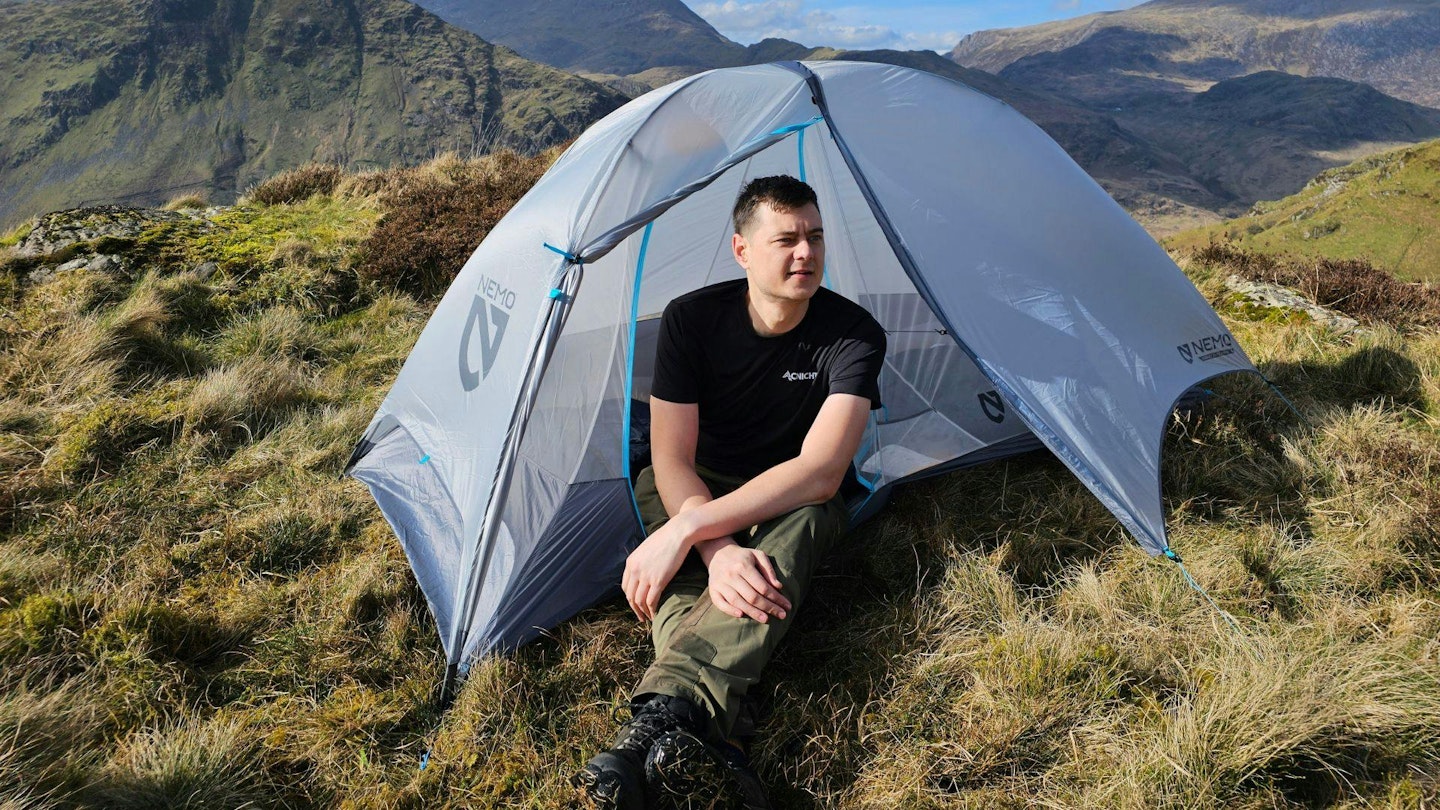
This stove was tested and reviewed by LFTO's freelance tester Matt Jones. As the former editor of Walk magazine and Scouting magazine, Matt is one of the most respected names in the UK outdoor industry, and can always be relied on when it comes to next-level knowledge about products and performance.
